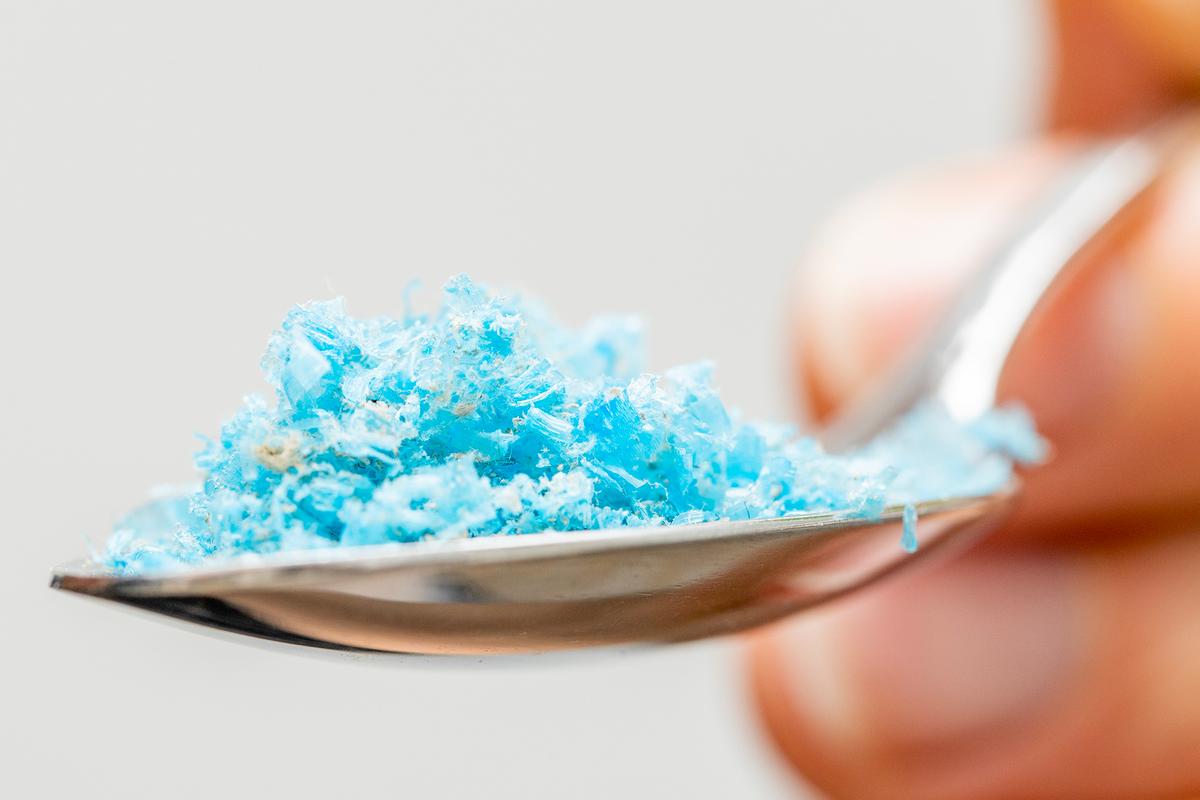
Definately nothing you want to embrace if at all possible. The real problem is that nano plastics cannot be broken down and removed by our bodies, so we do not want too much exposure. We now need definative pathology here to clearly associate all this with Parkesons which existed long before it attracted attention.
I do not think that these make it past our filters which use residency to allow the undisolved to drop out.
what needs to be done is that we need to correctly test our water supply for this risk.
Micro- and Nanoplastics Linked to Parkinson’s and Dementia
Experts say the new findings add to evidence linking plastics pollution to disease, urge political action to reduce environmental toxins.
(Andrzej Rostek/Shutterstock)
12/4/2023
That plastic water bottle you regularly drink from could one day decompose into tiny particles that wreak havoc in your brain.
New research shows that nanoplastics—microscopic particles broken down from everyday plastic items—bind to proteins associated with Parkinson’s disease and Lewy body dementia.
These stealthy nanoparticles have already infiltrated our soil, water, and food supply. Now, they may pose the next great toxin threat, fueling a wave of neurodegenerative disease.
Plastic Cups and Utensils Identified as Risk FactorsPolystyrene nanoparticles, commonly found in plastic cups and utensils, bind to alpha-synuclein, a protein linked to Parkinson’s disease and Lewy body dementia, the new study from Duke University’s Nicholas School of the Environment and the Department of Chemistry at Trinity College of Arts and Sciences found. The plastic-protein accumulation was seen in test tubes, cultured neurons, and mouse models.
The most surprising finding was the tight bonds formed between the plastic and protein within neuron lysosomes, according to Andrew West, the study’s principal investigator. Lysosomes are digestive organelles within cells that use enzymes to break down waste materials and cellular debris.
“Our study suggests that the emergence of micro and nanoplastics in the environment might represent a new toxin challenge with respect to Parkinson’s disease risk and progression,” Mr. West said in a press statement. This is especially concerning given the expected increase of these contaminants in our water and food, he added.
Growing evidence indicates that nanoplastics circulate in the air, especially indoors. When inhaled, they can travel from the respiratory tract directly to the blood and brain, increasing cancer risk.
Change Environment Now to Prevent Disease Later: ExpertOur health today is largely a function of our environment in the past, Dr. Ray Dorsey, a professor of neurology at the University of Rochester in New York and an author of “Ending Parkinson’s Disease,” told The Epoch Times.
“For example, the risk of lung cancer is a function of our past smoking habits,” he said. “If we want to live lives free of Parkinson’s disease, Alzheimer’s disease, and cancer in the future, we should pay attention to our environment today.”
The Duke study adds to evidence that common toxic pollutants may contribute to Parkinson’s disease, Dr. Dorsey said. More research is needed, but evidence from both laboratory and epidemiological studies suggests our environments are fueling Parkinson’s incidence increase.
“Much, if not most” of Parkinson’s cases may be preventable, he added.
Besides reducing our use of plastic, there are other effective precautions we can take to limit our exposure to this environmental toxin, Dr. Dorsey pointed out. These include the following:Using carbon filters to protect ourselves from chemicals in the water.
Purchasing organic food.
Thoroughly washing all fruits and vegetables.
Using air purifiers if you live in areas with high air pollution.
Parkinson’s-Linked Pollutants, Pesticides Still Legal Despite RisksBesides nanoplastics, other toxins like organic pollutants known as polychlorinated biphenyls (PCBs), banned since 1979 yet still found in 30 percent of U.S. schools, have been linked to Parkinson’s. Researchers have found high concentrations of this pollutant in the brains of deceased people who had Parkinson’s.
“We need to know the full extent of this toxic threat in our classrooms so that we can test for PCBs, remediate it and inform families that their students may be at risk of exposure to these dangerous chemicals,” Senator Edward J. Markey (D-Mass.) said in a press statement.
Other toxins linked to Parkinson’s in our environment have yet to be removed from use. The Environmental Protection Agency (EPA) has proposed bans on dry cleaning chemicals and pesticides associated with a 500 percent increased risk of Parkinson’s disease, but there has been no action yet.
Toxic Pesticides Harming Health but ‘Political Will’ Lacking
The EPA banned the pesticide chlorpyrifos (CPF) in 2021, but a court reversed that decision in November 2022. Research identifies CPF as a likely Parkinson’s disease risk factor.Another pesticide, paraquat, has allegedly been linked to Parkinson’s by its manufacturer Syngenta’s own research, per The Guardian’s report. Syngenta reportedly created a “paraquat SWAT team” to criticize evidence and shift focus to other environmental factors.
“We increasingly know that environmental toxicants from plastics from pesticides are harming our health,” Dr. Dorsey said. “Almost all of these are addressable; the only question is whether we have the political will to do so.”
No comments:
Post a Comment